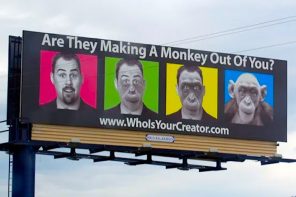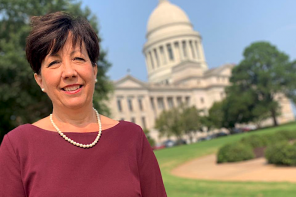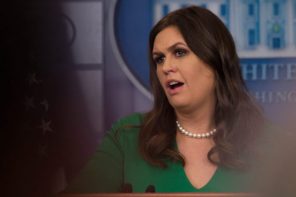In December 2004, following the Dover area school board’s decision to teach intelligent design in ninth-grade biology classrooms, eleven parents sued, sparking a federal Constitutional challenge. Lauri Lebo, a small-town reporter who covered the trial, knows not just the legal case and science, but the people on all sides of the divisive battle.
In The Devil in Dover, Lebo traces the compelling backstory of this pivotal case described by some as a perfect storm of religious intolerance, First Amendment violations, and an assault on American science education. In a community divided across unexpected lines, the so-called activist judge, a George Bush-appointed Republican, eventually condemned the school board’s decision as one of “breathtaking inanity.”
Lebo follows the story through its surprising twists, pondering whether this was a national war playing out in a small town or a small-town political battle playing out on the national stage. As a “local girl” with a fundamentalist Christian father, Lebo provides an account that is both fascinating and moving, as she thoughtfully probes one of America’s most divisive cultural conflicts; and the responsibility journalists have when covering such a controversial story.
What inspired you to write The Devil in Dover? What sparked your interest?
One of the attorneys calls me the “Lowly Worm” of the Dover trial, which I hope is an affectionate term, although I can’t be sure. It’s a reference to the old series of books by that name in which the “Lowly Worm” appears on every page, but never at the center. Rather, he is always hanging in the background. I have to admit, I find it a rather apt comparison. I immersed myself in all aspects of the case: legal, scientific, religious, social, educational, etc. After the trial was over, and before Judge Jones issued his verdict, I took a two-week road trip, touring creationist museums around the country. That’s how deeply I was involved in this issue. While I didn’t realize it at first, I had a deep personal connection to the story. But it was only later that I realized that was what was driving my interest. Once I made that connection, I was able to sit down and write.
What’s the most important take-home message for readers?
That these First Amendment cases aren’t just the subject of dispassionate courtroom debate; they are intensely personal. We are a nation founded on democratic principles. So, I think, we have this innate sense that teaching children both sides of a debate is a quite reasonable compromise. But what people don’t realize is these attacks have very real and painful consequences. In Dover, a science teacher trying to inspire her students with novel approaches to teaching was bullied into reading straight from the textbook. Two newspaper reporters were slandered and called liars. Two of the parents in the case are devout Christians who sing in the church choir, but people called them atheists. There was a beautiful Frank Capra moment in the trial when one of the plaintiffs, this mild-mannered paper company executive, summed up this point during his testimony, “We’re said to be intolerant of other views. Well, what am I supposed to tolerate? A small encroachment on my First Amendment rights? Well, I’m not going to.”
Anything you had to leave out?
Oh my goodness, yes. There were so many amazing moments, both in the courtroom and in the community. But it was an intensely complex case and rather than veer off subject, I tried to stay true to the narrative. One of the details that I cut from my manuscript is that a month before the trial, my family was named Pennsylvania’s Christian Family of the Year by a state coalition of pastors. My parents had been divorced for 20 years, and had recently remarried each other. Then-Senator Rick Santorum handed my parents the plaque honoring them. There was this belief that God had reunited the family, even though the youngest child was in her thirties.
What are some of the biggest misconceptions about your topic?
That one can’t believe in both God and evolution. I’ve run into quite a few people who think evolution is this either/or proposition. But there are many, many people, scientists included, who quite comfortably accept evolution, and also believe in God. John Haught, a Georgetown University theology professor, said it so beautifully when he testified during the trial that he thought it was a mistake to assume that one can not believe in evolution and religion, that to argue otherwise presumes to know the mind of God. He made this beautiful statement: “The God of intelligent design seems to be… a kind of tinkerer or meddler who makes ad hoc adjustments to the creation, whereas what I would want a child of mine to think when he or she thinks of God is something more generous, much more expansive, a God who can make a universe which is, from the start, resourceful enough to unfold from within itself in a natural way all the extravagant beauty and evolutionary diversity that, in fact, has happened.” To put it very simply, a God who is able to make a universe that can somehow make itself is much more impressive religiously than a God who has to keep tinkering with the creation.
Did you have a specific audience in mind when writing?
Ideally, I was trying to reach people who might know little about the issues of the case and consequently might think that it is only being fair and balanced to teach intelligent design alongside evolutionary theory. I’d like to think that readers might come away with the same view as Judge John E. Jones III did when he wrote in his decision, “It is our view that a reasonable, objective observer would, after reviewing both the voluminous record in this case, and our narrative, reach the inescapable conclusion that ID is an interesting theological argument, but that it is not science.”
Are you hoping to just inform readers? Give them pleasure? Piss them off?
I’ve had many people ask me if sitting through the trial each day for six weeks was boring. But, as I’ve told them, my experience was that I couldn’t believe I was getting paid to have so much fun. My goal in writing this book was to make people understand why this is all so interesting, and to do justice to all these wonderful and amazing stories that were either told to me, or that I got to watch first hand. I want readers to come away with the same excitement and enthusiasm for these issues as I had while sitting in the courtroom.
What alternate title would you give the book?
I often joked that the title should be “Welcome to Insane World” because none of the pieces fit neatly together: “Darwinist”-spouting teachers were preachers’ kids; the “atheist” plaintiffs taught Sunday school; the “activist” judge was a Bush-appointed Republican; and the people labeled “liars” were willing to go to jail for the truth.
How do you feel about the cover?
We had originally chosen a different photograph for the cover that showed the media surrounding the lawyers outside the courthouse following the trial. It really captured the swirl of chaos that I remember from that day. But there was a problem getting permission to use it. So, we used a different photo, taken by Wesley Elsberry, a scientist who attended much of the trial. I think this photo of lead plaintiff Tammy Kitzmiller reveals her vulnerability at that moment, but also depicts the bravery of all the plaintiffs in their willingness to take the stand that they did.
Is there a book out there you wish you had written?
There’s this terrific little book How to Keep Dinosaurs by Robert Nash. It’s a children’s book and provides careful step-by-step instructions on how to properly take care of your pet dinosaur. It’s quite amusing to read, but still gives the reader a terrific background on the many types of dinosaurs. One of the horrible things we’re seeing happen today is that some fundamentalists—Ben Stein in his movie Expelled, for instance—are teaching our children to fear and hate science. I think of all those beautiful little minds, so full of potential, being poisoned by this notion. This book teaches children to be whimsical about science, to play with it and have fun. To be joyful.
What’s your next book?
I am working on a book now about another case I covered while a reporter in York. In 1969, two people were killed during York’s race riots; a black preacher’s daughter and a white rookie cop. For 30 years, no one was ever arrested, even though there were estimated to be 100 witnesses in both shootings. In 2000, I was part of an investigative team at The York Dispatch. Our reporting on the crimes spurred a witness coming forward and led to the District Attorney’s office reopening the investigations. By the time it was over, the town’s mayor had been arrested and four men were convicted.




